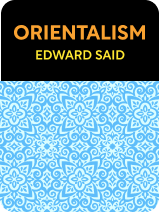

This article is an excerpt from the Shortform book guide to "Orientalism" by Edward Said. Shortform has the world's best summaries and analyses of books you should be reading.
Like this article? Sign up for a free trial here .
What is neo-Orientalism? What role did it play in the making of the Muslim stereotypes?
Neo-orientalism is a category of contemporary incarnations of Orientalist discourse. The term neo-Orientalism is generally found in modern Orientalist literature concerning predominantly Muslim countries, in particular, in the Middle East and North Africa.
Keep reading to learn about the rise of neo-Orientalism and its core assumptions.
The Rise of Neo-Orientalism
In the latter decades of the 20th century, Orientalism became recast as “area studies,” but its assumptions and power dynamics remained. Rather than being based around the scholarly study of ancient languages and artifacts, studies of the Orient were becoming more geographically based and strategic in their purpose. Building on its legacy as a partner to European imperialism, modern Orientalism became a tool of American policymaking, helping the United States formulate its response to the rapidly changing and strategically vital Middle East.
Well into the 1960s and 1970s, area studies specialists were publishing papers analyzing the failure of the “Semitic” people to produce great cultural achievements on par with those of the West. This was little more than neo-Orientalism, with crude and reductive analyses of Arabs and Muslims still finding a welcome audience in prestigious academic journals.
Figures like the Austrian historian Gustave von Grunebaum (1909-1972) argued that Islam was rooted in its classical past, unaltered by the changing world. There was no such thing as classical, medieval, or modern Islam—there was only Islam as it always had been and always would be.
For figures like von Grunebaum, the entire history and culture of the Middle East could be understood through the lens of Islam. It was the sole, all-encompassing feature of Arab life. Unfortunately, these reductive and simplistic explanations of Islam, Arabs, and their relation to Europe and America continued to have great intellectual and popular currency well into the late 20th century.
Example #1: The Cambridge History of Islam
An example of the lingering effects of neo-Orientalism can be found in the Cambridge History of Islam (1970). The two-volume history—written and edited almost entirely by European and American scholars—failed to examine Muslim theology on its own terms, instead focusing only on Islam’s history of conquest (and thus, its threats to the West) and the rise and fall of Islamic dynasties.
Among other glaring oversights, the Cambridge History of Islam also ignored the stunning cultural achievements of the Abbasid Caliphate (750-1258) and dismissed the seriousness of postwar anticolonialist politics.
Example #2: The “Clash of Civilizations”
Neo-Orientalism scholars like the American political scientist Samuel Huntington (1927-2008) have posited that there is a fundamental “clash of civilizations” between the liberal, secular West and the Islamic world.

———End of Preview———
Like what you just read? Read the rest of the world's best book summary and analysis of Edward Said's "Orientalism" at Shortform .
Here's what you'll find in our full Orientalism summary :
- How Western society invented the concept of Orientalism
- Why "the Orient" was thought of as a different, exotic, and dangerous place
- How Orientalism was central to European colonialism






